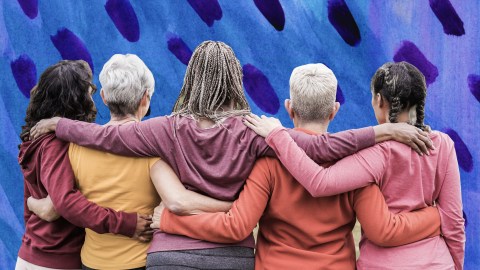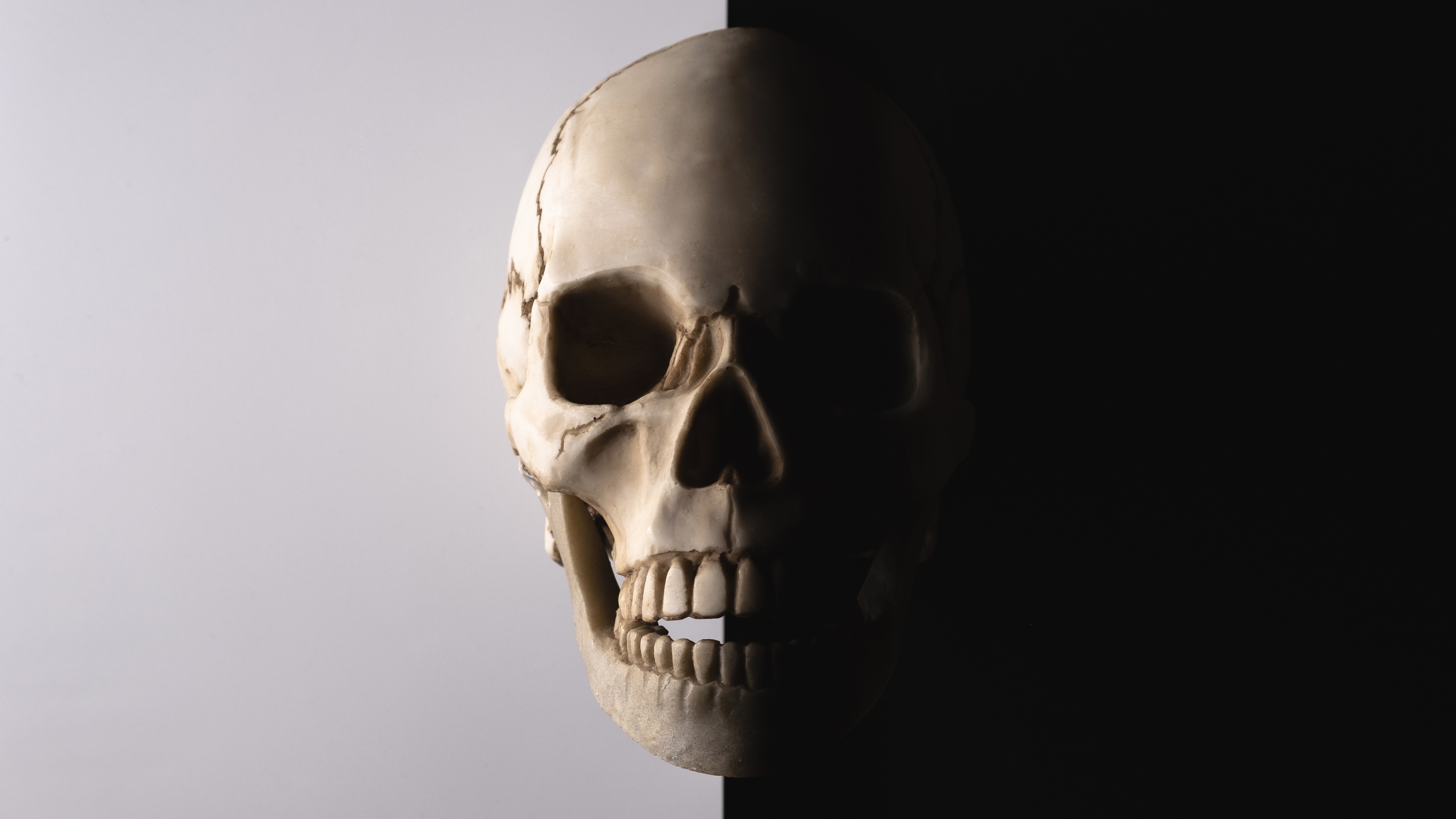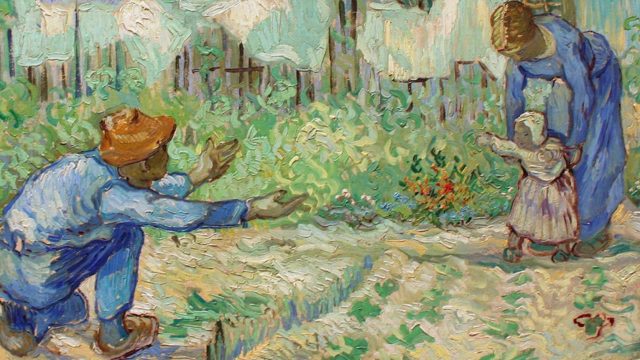Before your real funeral, you should attend a “living funeral”

- A “living funeral” — also known as a “living wake” — is a ceremony held for a person who is still alive.
- The living funeral has cultural roots in Japan as well as in long-held indigenous North American traditions.
- While living funerals can ease fear and anxiety about death, traditional post-mortem funerals retain an important role in the grieving process.
“What a waste. All those people saying all those wonderful things, and Irv never got to hear any of it.”
— Mitch Albom, Tuesdays with Morrie
Death is inevitable. It is out of our control. But how we die is within our control. One way to reclaim some measure of control over death is by way of a “living funeral,” also known as a “living wake” — a ceremony held for a person who is still alive, often to celebrate their life and legacy while they are able to participate. Unlike a traditional funeral, it is a way for the person to say goodbye to loved ones and to be able to smell the flowers at their own funeral.
These events are often planned with the help of a “death doula,” who can provide guidance and support in creating a meaningful ceremony that reflects the individual’s wishes, values, and beliefs. The word “doula” is derived from the Greek term doulē, which means “female servant.”
A death doula is a trained guide who can provide a holistic, community-based and personalized end-of-life experience. They work alongside medical and palliative care professionals rather than replacing them. Their training can include knowledge of the biological, psychological, social, spiritual, legal, and ethical aspects of end-of-life care. Overall, death doulas can help to alleviate the collective fear of death and promote greater peace and understanding in the face of this universal experience.
Where did living funerals come from?
The specific origins of living funerals are difficult to trace, as rituals like these have developed independently in different cultures over time.
The Lakota Sioux have a tradition of the living funeral in which they repair relationships or make amends, distribute family heirlooms, and eat traditional foods as a way of purifying and preparing for death. Near the time of death, family, friends, and neighbors gather to say farewell.
A living funeral is for the dying, while traditional funerals are for the survivors.
Anishinaabe people in the Great Lakes region of Canada and America also honor their dying loved ones with end-of-life ceremonies. A pipe ritual is commonly conducted by a spiritual leader to guide the person’s spirit to the spirit world. The sacred pipe is a revered tool for communication with the Creator, and during the ceremony, tobacco is smoked to express gratitude for life and creation. The dying person makes amends with the Creator while family members pray for their safe passage. Sacred medicines are burned, offerings of food and cloth are made, and loved ones sing sacred songs to ease the pain of the dying until their spirit leaves their body.
The Japanese have a non-traditional practice called seizensō, which means “funeral while alive.” According to cultural anthropologist Satsuki Kawano, this gives the elderly a novel sense of independence, countering negative perceptions of aging and the elderly. Due to various societal and economic factors, Japan’s traditional respect for elders is eroding and ageism has become a problem. Seizensō challenges the notion that the elderly are passive or burdensome members of society and emphasizes the importance of shaping their own lives and legacies.
What does a living funeral actually consist of?
Planning a living funeral is very personal and customizable, and the specifics can vary. The ceremony can be held in various locations, including a person’s home, an outdoor spot, a favorite restaurant, or any place of significance. Guests can bring mementos that trigger memories and stories, informal speeches can be made, and a designated friend or officiant typically orchestrates the activities. The sequence of events can include any variety of activities that reflect the individual’s personality and interests, but food, videography, music, art, and visiting the final resting place are some common choices.
One of the most important aspects of the living funeral is making the dying person feel comfortable and cared for. BJ Miller, a palliative care physician at the University of California-San Francisco Cancer Center, said in a 2015 TED talk, “So much of it comes down to loving our time by way of the senses — by way of the body; the very thing doing the living and the dying.” He urges people involved in end-of-life care to consider the bodily senses of the person who is dying. He recommends creating a pleasant and comforting experience for them that takes all of their senses into account and honors their dignity. He describes one elderly woman’s request to feel her dog pressing its nose against her skin.
Death doula Alua Arthur emphasizes creating an ideal deathbed as part of the living funeral ceremony. She advises making it comfortable, aesthetically pleasing, and sensually enriching by including favorite scents (incense), colors (pillows, art, flowers), and sounds (singing bowls, music).
If a ceremony is intended to help the person nearing the end of their life overcome anxiety about death, one of the events might include a guided meditation that walks the dying person through a visualization of their own death. Visualization techniques can be used to induce a sense of calm and connection to the natural world, and can help one to confront and come to terms with one’s own mortality. One such visualization guided by death doula Brooke Manning involves imagining oneself in a peaceful natural setting and then visualizing a metaphorical representation of life as a light within the body. This light is then imagined to sink down into the earth, joining up with lights that represent other people’s life sources, creating a sense of connection to the universe and fostering a deep understanding of one’s place in the world.
Informed consent should be at the center of a living funeral ceremony. It is important to ensure that the person for whom the living funeral is being planned has autonomy. A living funeral can also be an emotional experience for everyone involved, so it is important to ensure that the person and their loved ones are emotionally prepared for the experience.
Any decisions made should also be respectful of the person’s cultural, religious, and personal beliefs. To ensure that the ceremony appropriately reflects this, it is important to involve doulas who have the necessary cultural and spiritual knowledge, so it’s often helpful to select someone who approaches this work through a polytheistic lens.
One of the main decisions when planning a living funeral involves the timing of the ceremony. While it is a personal choice, and there is no specific requirement, most people choose to have a living funeral when they receive a terminal diagnosis or when they feel that their death may be approaching. However, others may choose to have it earlier to proactively participate in the event, enjoy the celebration of their life, and have meaningful conversations with their loved ones while they are still able to do so.
Living funerals can’t replace the real thing
Unlike in a traditional funeral, a living funeral allows the central figure to speak, hear others speak, take part in rituals and rites of commemoration, all while in the presence of supporters as witnesses. It is a collaborative and personalized ceremony that empowers the person of focus with agency during a time when their control is slipping away.
Psychologist Dr. Nick Capaul, who specializes in grief and loss, explains that an appropriate way to think about the difference between the two types of funeral, is that a living funeral is for the dying, while traditional funerals are for the survivors. Although both are beneficial, the latter is often still required for the bereaved to gain closure. In his experience, when families opt for a living funeral instead of a traditional post-mortem funeral, other family members or friends of the bereaved push back. They almost always want a traditional funeral. When people are robbed of their opportunity to confront and process death, people can experience what is called “disenfranchised grief.” In reference to grief, disenfranchisement means depriving someone of their right to grieve. Dr. Capaul believes that a living funeral does not include the element of loss, and if there is no loss, you are not truly confronting grief or processing death.
Dying individuals are often isolated due to illness or conditions that limit their communication and mobility, while friends and family may also avoid interactions due to discomfort and cultural taboos around death. A living funeral can provide one last party, similar to an Irish wake. In general, while being around a person nearing the end of their life can be emotionally challenging, creating more opportunities to spend time with them can be beneficial for everyone involved.





